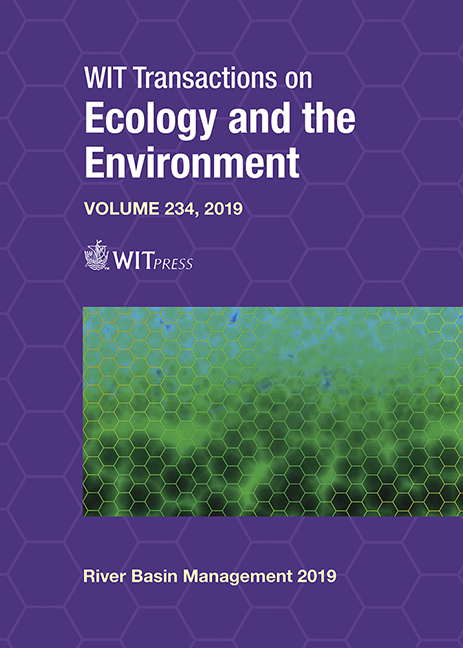TURBULENT KINETIC ENERGY IN FISH PASSES OF VARIOUS TYPES OF CONSTRUCTION
Price
Free (open access)
Transaction
Volume
234
Pages
10
Page Range
81 - 90
Published
2019
Paper DOI
10.2495/RBM190091
Copyright
WIT Press
Author(s)
MARTA PUZDROWSKA, TOMASZ HEESE
Abstract
A fish pass remains a hydraulic facility, which is to restore the migration possibility for ichthyofauna through the existing cross hydraulic structures. Except for the values of average flow velocities, the main features of flow deciding about the efficiency level of the device are values and characteristics of turbulent kinetic energy (TKE) distribution. TKE affects the power cost to be borne by fish to pass through the facility, and it affects the pace (i.e. the time) of passing through an obstacle. The main objective of research was to determine the impact of modifications in geometry of partitions in the bolt fishway channel on changes to hydraulic conditions and parameters for a water stream in a discharge channel. Relevant geometry of partitions directly improves the efficiency of objects. Bolt fishway is an object used for fish migration, where cross-partitions separating following chambers (pools) are made of cylindrical, rotary spandrel-beam elements of various height. The measurements were done for three instantaneous flow velocity components in indicated measurements sections. The analysis of the results was done for three-dimensional flow structure. The results were developed using Matlab software. The results were significantly different in comparison to the previously published ones. The differences referred to the values, as well as to the features of spatial distribution. This paper focuses on the analysis of TKE in bolt fishways, and on the comparison of that value’s distribution in technical facilities of various types of construction, i.e. in pool-type fishways and in vertical slot fishways.
Keywords
fish pass, blot fishway, design of fish passes, turbulent kinetic energy, turbulence of water flow





